LifeWithMyDogs is supported by our audience. When you purchase through one of our links, we may earn a small affiliate commission. As an Amazon Associate I earn from qualifying purchases. Your cost is not affected.
**********
Hey there, fur-parents! We all know our furry friends are the absolute best, right? And you want them to look great and feel their best, too! That’s where regular dog grooming comes in – it’s like a spa day for your pet dog! But guess what? It’s not just about pampering; some paw-some perks come with it. So, get ready to discover the excellent benefits of grooming your dog beyond just a pretty coat. Let’s dive in and make your furry buddy feel like the absolute top dog!
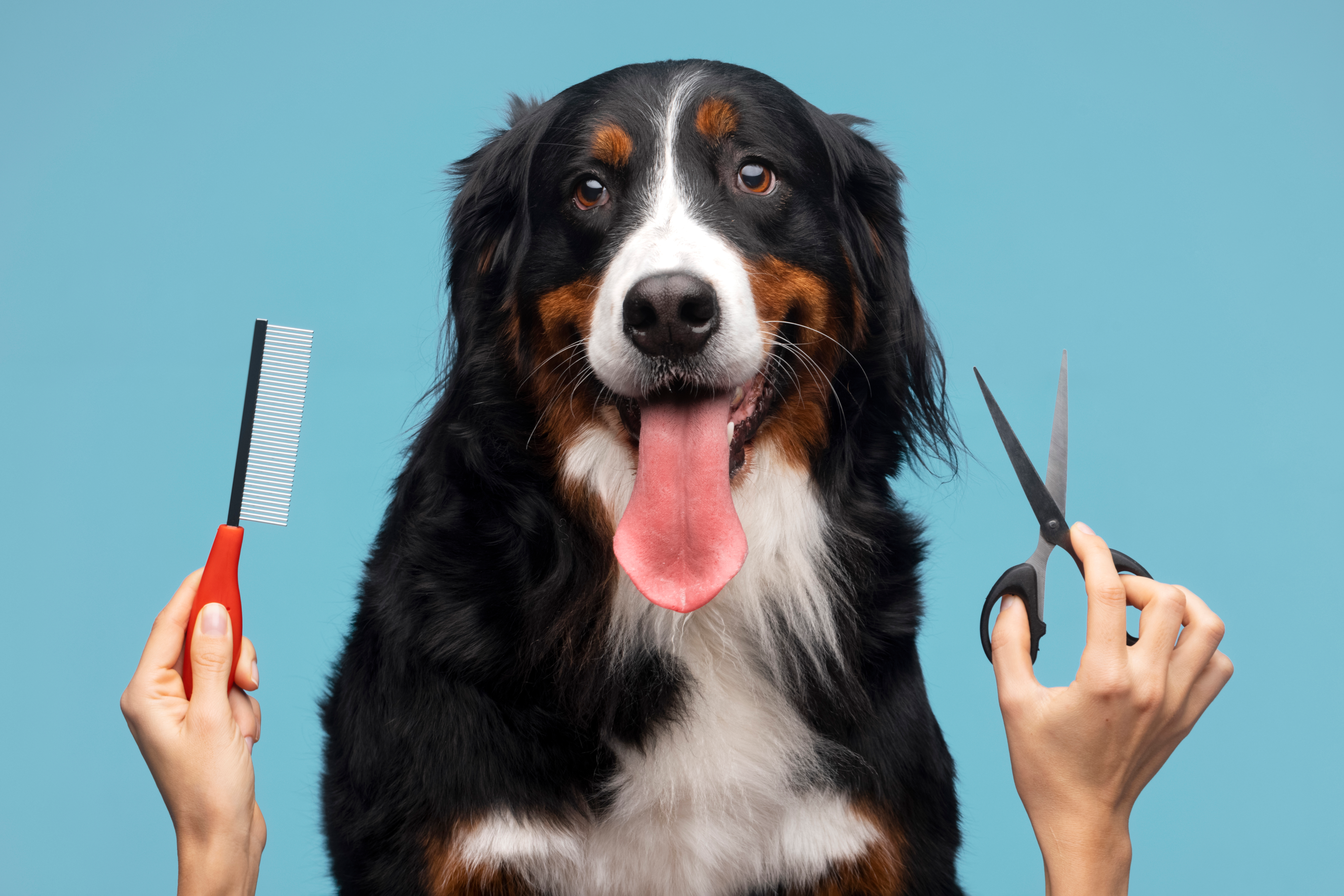
Benefits of Dog Grooming
Giving your furry buddy regular grooming sessions isn’t just about keeping them clean. It’s like a health and happiness boost rolled into one! You’ll also catch any possible problems early, lower the risk of infections, and score some bonding points with your dog. So yeah, a whole bunch of perks comes with dog grooming, and the bonus is that they’ll be the cutest thing ever! How often this pampering session should happen depends on a few things: how big your dog is, what kind of breed they are, and what type of coat they’re rocking. So, make it a routine that fits your dog’s unique needs! Below are the health benefits of regularly grooming your dog.
Detecting and Dealing With Fleas or Ticks
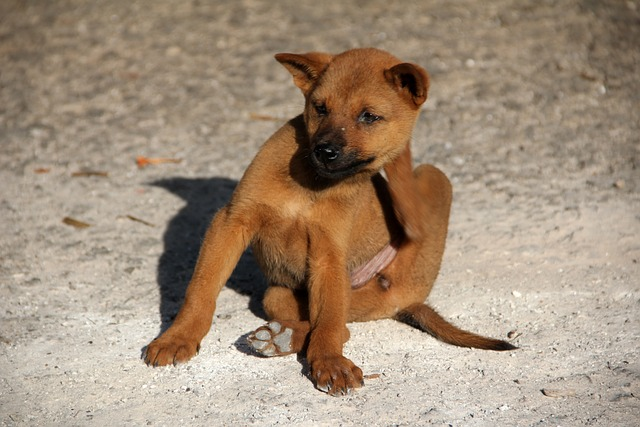
Giving your dog regular grooming session is like hitting two birds with one stone – not only do they look better, but you also get to catch fleas and ticks early on. Those little buggers might seem harmless, but the longer they hang around on your furry friend, the more trouble they can cause. Spotting fleas sooner rather than later can prevent a full-blown invasion, and nabbing ticks can stop serious infections like Lyme disease from taking hold immediately.
You can play detective and catch ticks and fleas by brushing your dog well. While running that brush through their fur, keep a sharp eye on their skin for unwelcome guests. Now, spotting grown-up fleas can be a bit of a puzzle, but their eggs are like the ultimate hide-and-seek challenge. These tiny things are even smaller than a grain of salt! Flea eggs are oval-shaped and usually pale off-white, making them quite the stealthy tricksters.
Dead Skin and Hair
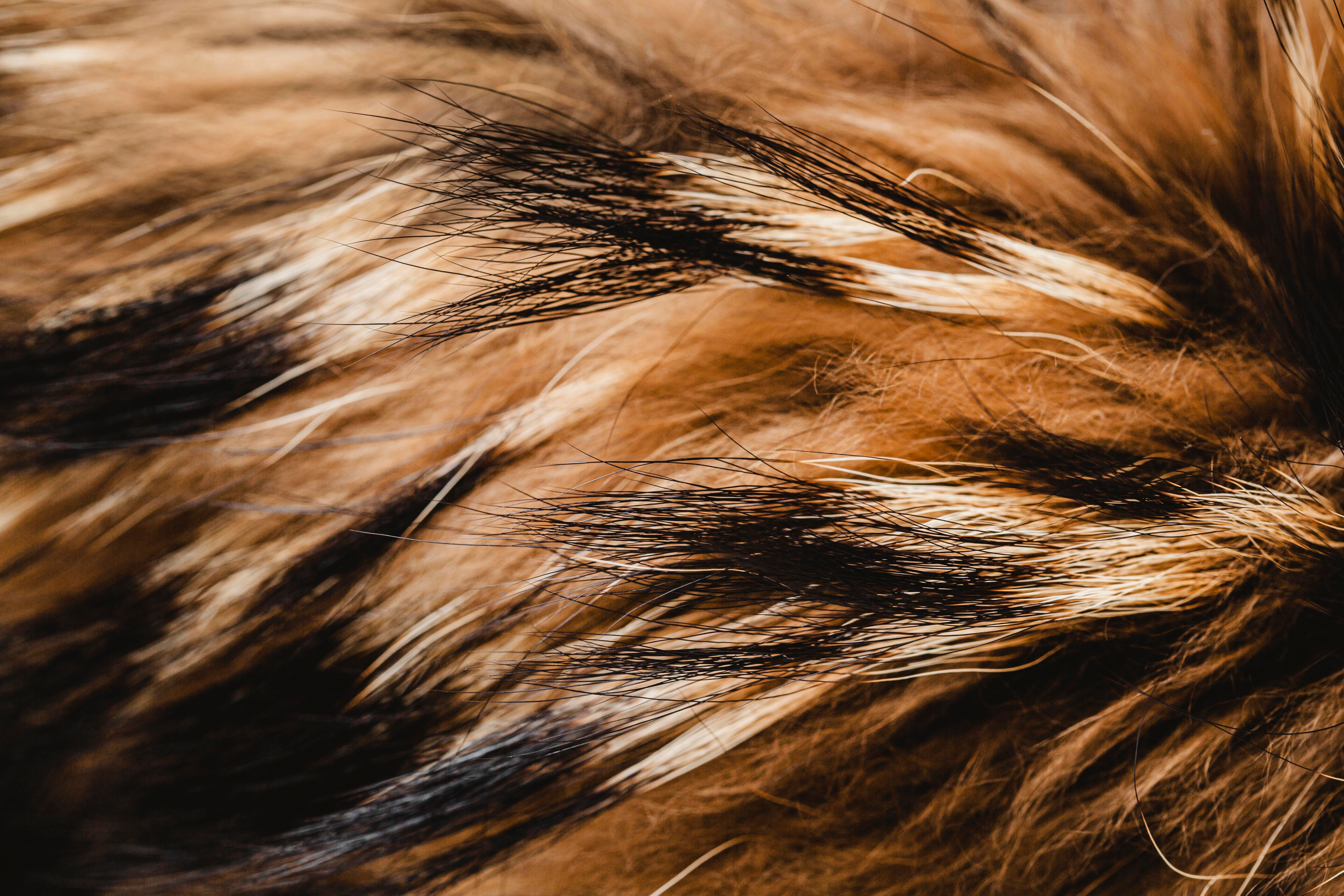
Like humans shed dead skin to make room for fresh skin cells, our furry pals do the same. When all that dead skin starts to pile up on your dog, it can clog their pores and make them feel like they’re in an endless itch-fest. And believe me, all that scratching can turn their skin red, raw, and super painful. As if that’s not enough, the dead skin is like a welcome mat for stinky yeast growth. But don’t worry; a simple solution is regular brushing and bathing. This combo removes dead hair and skin, allowing new skin and hair to do their thing. Giving your dog a quick brushing every other day is like preventing a tangle and mat party. However, be careful not to overdo it, as too much brushing can harm their hair follicles, leaving them with a dry and brittle coat. And speaking of coats, don’t brush them when they’re all muddy – a sound bath is the way to go. Opt for dog conditioners that strengthen and hydrate their hair naturally.
Spotting Skin Issues
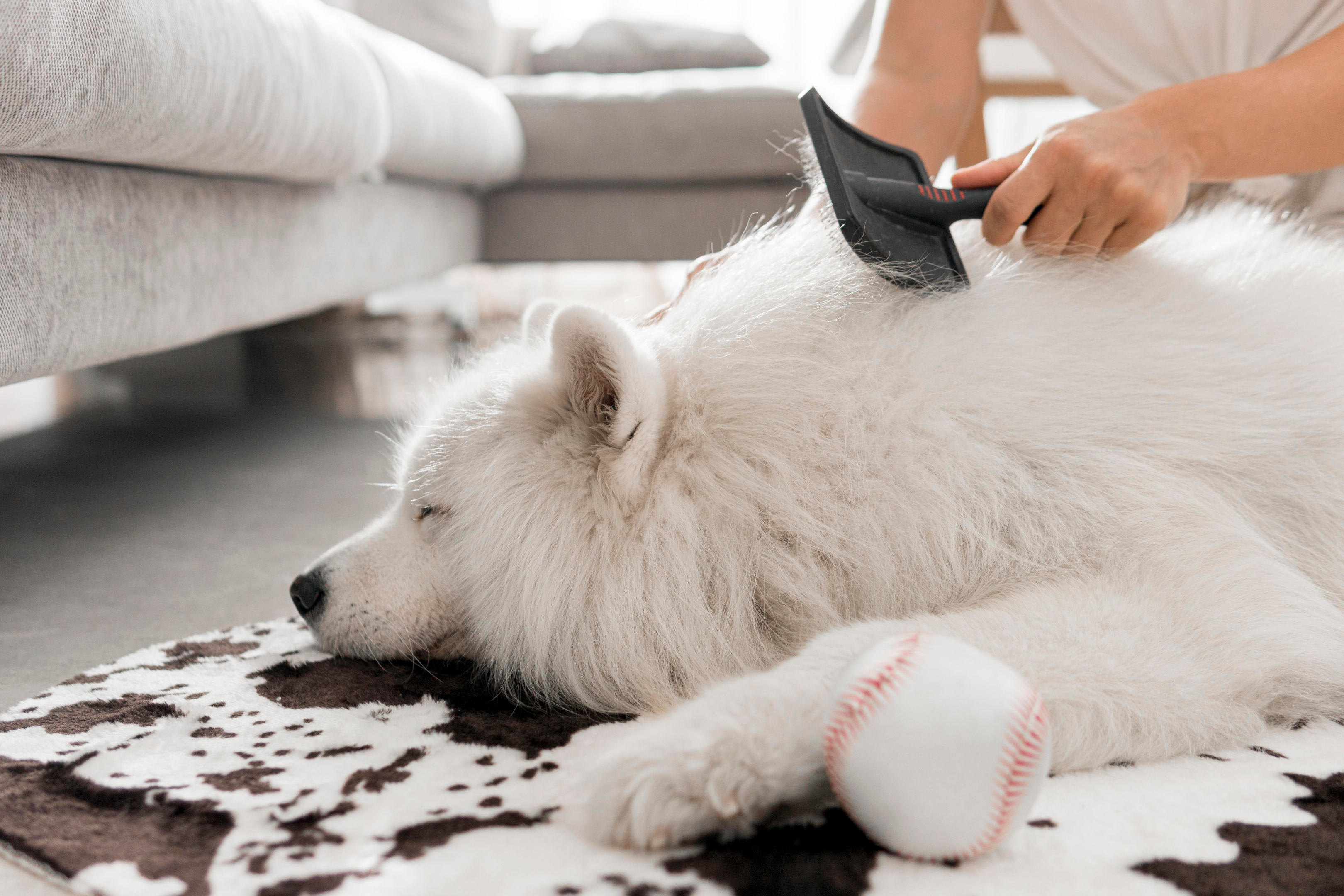
The more you hang out with your furry buddy, giving them some good pets, regularly brushing them, and getting them all cleaned up, the more you’ll get a check of their body. So, if something seems a bit off, you’ll catch it in a moment. And trust me, the quicker you pick up on any skin issues, the easier it’ll be to deal with them. So, while you’re spoiling your dog with some grooming time, be on the lookout for these common skin problems:
- Eczema: Watch out for flaky, dry skin that looks all wrinkly and patches of skin that seem thicker and scalier. Keep an eye out for any redness, rashes, or open sores.
- Hotspots: These are raw, open wounds and skin spots that look swollen and puffy. Sometimes, you might notice sores leaking some fluid or even bleeding.
- Allergies: Look out for hives or swelling, especially around their ears, eyes, armpits, paws, and private area. Dry, flaky skin could also be a clue.
- Ringworm: Look for circular spots where their fur might thin out, along with scabs and redness. Their hair and claws might become more brittle, and their skin could get all scaly and flaky.
- Skin infection: If there’s a musty smell, and you see their skin getting thicker, redder, or even forming little pus-filled bumps, plus hair falling out, a skin infection might be sneaking in.
Feed the Right Diet
A lack of proper nutrition may cause the skin to dry up when your animal eats. Try repurposing your dog food for the shedding. What’s in a pet’s mouth is part of the process, not the urine. Skin and coat health depends on a nutrient-rich diet with dietary supplements that provide essential nutrients. Generally speaking, your pet’s skin and coat are good health indicators. Omega 3 or six fats and many vitamins help with skin health.
Discovering Any Unusual Bumps or Lumps
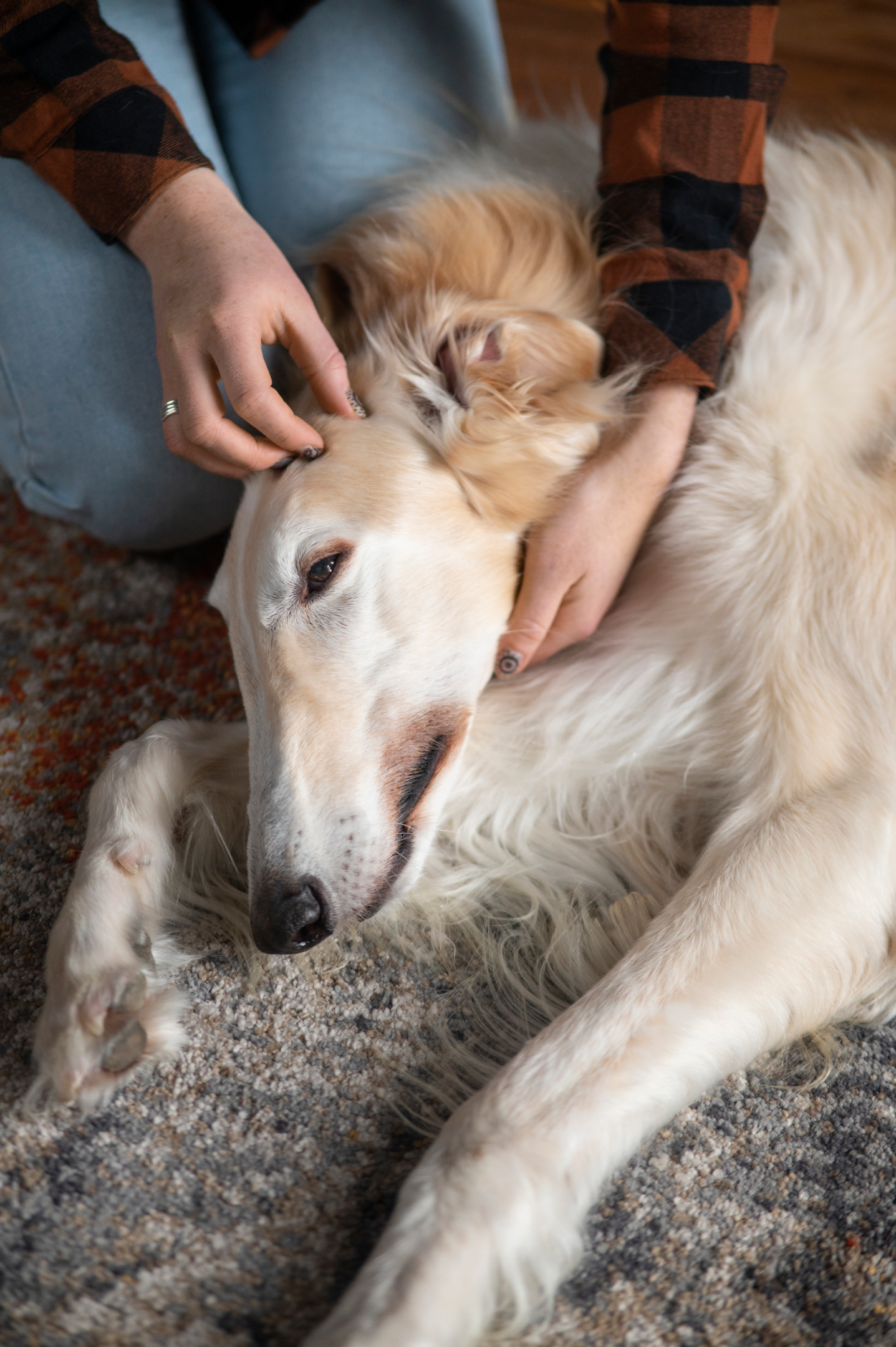
You might come across various bumps on your dog’s skin – some hard, some soft, and the seriousness can vary too. But here’s the golden rule: catching things early is like being a superhero for your dog’s health. Here’s the lowdown on some common skin growths and what to be on the lookout for:
- Mast cell tumors are the real troublemakers – cancerous tumors that tend to be reddish and firm to the touch. Sometimes, they can act like other skin issues, so it’s tricky.
- Fatty tumors are also called lipomas, benign (not cancerous) growths that usually appear on older or heavier dogs. They’re typically roundish or oval and feel squishy. You’ll usually find them around the chest or belly area, but they can pop up elsewhere, too. While they’re not cancer, they can start small and balloon up over time. Usually, vets won’t remove them unless they’re messing with your dog’s mobility.
- Warts: These little things look a bit like tiny heads of cauliflower, and they’re caused by something called canine papillomas.
- Abscess: These are like swollen, painful lumps lurking under your dog’s skin, filled with yucky pus. They’ll ooze out when they pop and give off a not-so-pleasant odor. You tend to see more of these in dogs with rough times, like being injured or having a weaker immune system. If they aren’t treated, they can even give your dog a fever and become a more significant issue.
Helps Maintain Physical Health by Trimming Nails
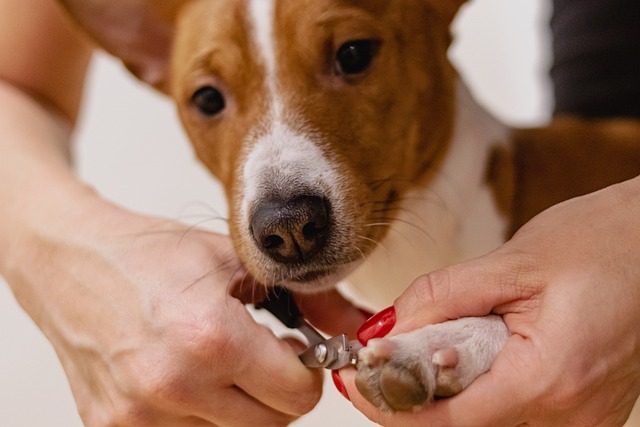
Skipping nail care can put extra pressure on their toes and joints, which is not what they signed up for. Imagine their nails catching on the carpet or cozy bedding – not fun, right? But here’s where it gets real: when your dog’s nails go untrimmed, they can mess with your dog’s bone development, their posture and even give them arthritis. It’s like these nails are pushing into their paws, and trust me, that’s a painful situation. They might even break or split, turning into little sharp weapons that could cut your dog. What’s more, those overgrown nails might turn your hardwood or tile floor into a slippery ice rink for your dog. You don’t want them sliding around and potentially getting hurt even more.
Makes Ear Infections Less Likely
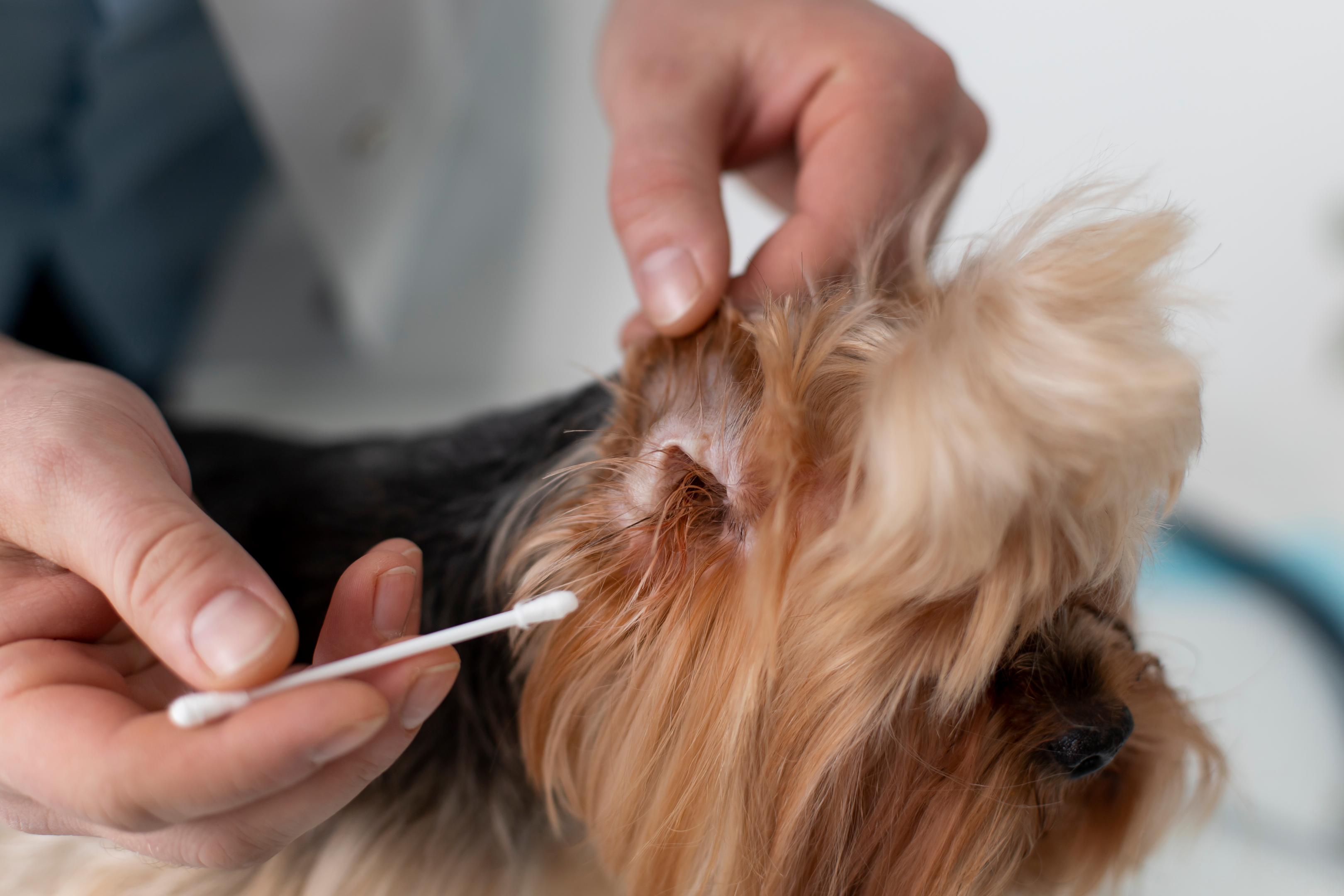
By regularly giving your dog’s ears a good clean, you’re not only keeping things tidy but also spotting anything unusual and keeping those pesky ear infections at bay. It’s like removing the wax and debris buildup that could lead to trouble. If you notice something’s off, it might hint at a more profound issue. Look for any redness, icky discharge, or weird smells. These little warning signs could indicate an ear infection is trying to crash the party.
How to Groom Your Dog At Home
Giving your dog good grooming isn’t just about appearances – it’s like giving them a confidence boost and a comfort upgrade. Plus, these regular grooming hangouts are your chance to give your dog’s coat, teeth, eyes, ears, and nails a thorough once-over for any hints of trouble. Now, as for how often this pampering session should happen, it depends on a few things:
- How big your dog is.
- What kind of breed they are.
- What type of coat they’re rocking.
So, make it a routine that fits your dog’s unique needs! Caring for your dog’s hygiene is essential for keeping them healthy and happy. But here’s the deal: while humans might be all about the daily hygiene routine, most dogs don’t need that level of maintenance. How much grooming they need and how often depends on the breed they belong to.
Breeds like the Afghan Hound, Poodle, and Komondor are the ones that ask for more attention in the grooming department. Conversely, breeds like the Beagle, Weimaraner, and Boxer are more chill when grooming. They let you have some breathing space. No matter the breed, a few hygienic practices should always be on your radar. Teeth brushing, ear cleaning, trimming those nails, and giving their coat a good brush. These are like the essentials of regular dog care, no matter what kind of furry friend you have.
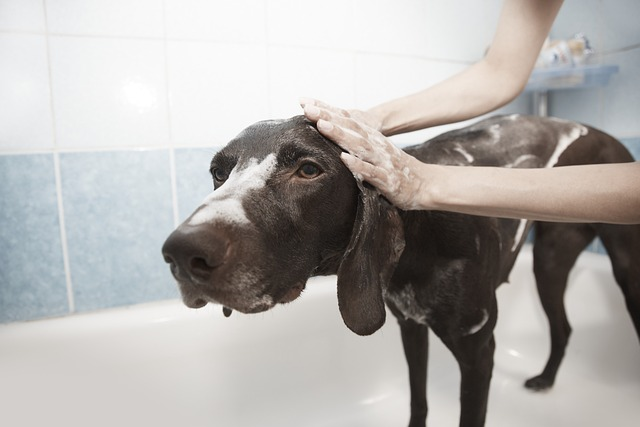
Bathing at Home
Giving your dog baths is like a ‘sometimes’ thing – not too often, though. How often they need a bath depends on what kind of dog they are and what their coat is like. If you wash them too much, it’s like washing away all the natural oils that keep their fur nice and soft, and that can turn it dry and not-so-huggable.
When the need arises, grab a mild dog shampoo. Pop your dog in a tub or a basin, protect their ears, and put a few drops of mineral oil in their eyes to keep them safe. Start by wetting them with some warm water, then apply the shampoo,o starting from their neck and working your way back. Get that lather going and give them a good scrub, then make sure you rinse them super well with warm water. Afterward, prepare for some towel time – they’ll probably join in with enthusiastic shaking too! And if their fur needs extra fluff, you can use a blow dryer to give them a blow-dry. Once they’re all dry, comb or brush as needed.
Brushing at Home
Getting a few good brushing sessions each week is like keeping your typical dog looking all spiffy and clean. But if you can do it daily, that’s even better! When you’re giving your dog a brush-down, make sure you go down to their skin. It’s like giving them a mini massage that boosts blood circulation and removes those pesky dandruff flakes.
Now, the tools you’ll need depend on what your dog’s fur is like. If they’re rocking long hair, go for a pin brush – those have these lovely round-ended stainless-steel or chrome-plated pins. Short-haired, medium-haired, and long-haired breeds will do fine with bristle brushes. There are slicker brushes for getting rid of mats, and that pesky dead hair, plus rubber curry combs that give their smooth coats a nice shine and get rid of dead hair. And oh boy, there’s a whole bunch of other stuff, too: clippers, stripping knives, rakes, hairdryers, and more – basically, an entire grooming toolbox!
Eye Cleaning at Home
Suppose your dog’s got a slight discharge going on; no worries! Just grab a damp cotton ball and give things a gentle wipe. But hey, when it comes to their eyes, don’t throw anything irritating in there.
Ear Cleaning at Home
Giving your dog’s ears a little cleaning action once a month is a good plan, especially if they’re the type that tends to have ear issues. Here’s the trick: focus on the outside part of the ear only. Grab a damp cloth or a cotton swab with some mineral oil on it and gently wipe things. But remember, never go poking anything into their ear canal.
Some dogs might need a bit of hair plucking just inside their ears to keep that air flowing smoothly. No worries if you need to check if your furry buddy falls into this category! Your professional groomer will ask for the final word on this. They’ll give you the scoop on whether your dog needs a little ear hair makeover.
Teeth Brushing at Home
Grab special toothbrushes and toothpaste for dogs, and start brushing their teeth regularly. But don’t worry if your dog isn’t too thrilled about the whole toothbrush! You can ease them into it by first giving their teeth and gums a little rub with your finger. Then, try putting a dab of toothpaste on your finger and let them check it out – maybe give it a little taste. The same goes for the toothbrush – let them sniff it and give it a lick. And hey, remember to chew toys! They’re like nature’s toothbrushes for dogs, helping to keep those teeth sparkly. As your furry buddy ages, they might have some tartar buildup that needs extra love. That’s when it’s time to call in the experts – a professional groomer can give their teeth a special cleaning session to keep everything in tip-top shape.
Nail Trimming at Home
Let’s talk about your dog’s nails – they’re essential for your dog’s feet to stay healthy. Keeping them short is the key. Long nails mess up their walk; they can break easily and cause pain. If your dog is walking or running and you hear them clicking on the floor, they’re too long. Use a special clipper to trim nails. Don’t cut too close to the “quick,” which is the part with blood vessels. You can start by trimming the curved tip of the dog’s toenails that points downward. Dogs might not like nail trims, so start when they’re young to get them used to it. Go slow, and they’ll learn it’s not scary. Note! Could you use a styptic powder if you accidentally cut the quick and there’s bleeding? If nail trimming feels tough, ask a vet or groomer for help.
Grooming Tips: At-Home Grooming (Dos)
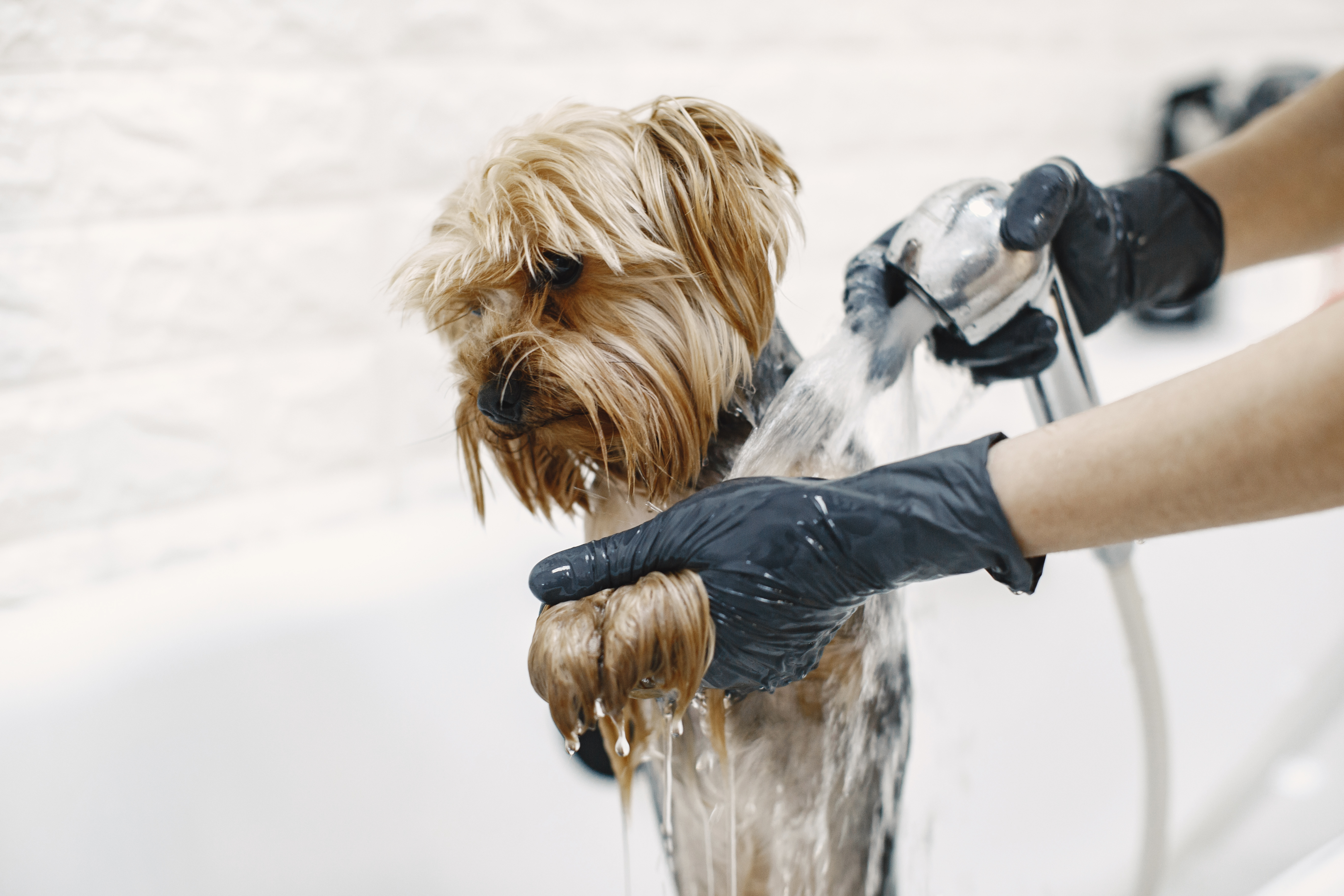
Let’s break down some easy and practical grooming tips for your furry companion. Grooming doesn’t have to be complicated – it’s all about the right tools and some simple steps to keep your dog looking and feeling their best
Paw Check
Always check your pet dog’s paw pad – no dryness, cracks, or injuries are allowed. Trim excess hair between their toes for their comfort.
Eye Care:
For dogs with hair covering their eyes, please keep it clean and trimmed. Make sure the trim doesn’t let hair irritate their eyes.
Vet-Approved Products
Always stick to hygiene products approved by your veterinarian. Your dog’s health and happiness come first!
Quick Clean-ups
A damp towel is your quick fix for removing outdoor debris like dirt, mud, pine needles, and more.
Get the Right Tools
Equip yourself with the right gear for a smooth grooming experience. These mentors – professional groomers, breeders, and vets – can guide you on what you need, including nail trimmers, styptic powder for nail bleeding, teeth-cleaning tools, brushes, combs, shampoos, and even blow dryers if necessary. They can also help you choose grooming tables and arms for your dog’s comfort.
Brush According to Coat
You can use a brush that suits your dog’s coat type. Bristle brushes work wonders for short-haired breeds, while sleeker brushes are ideal for long-haired ones. Your expert sources can give you the green light on the best choice.
Teeth Time
Brush your dog’s teeth daily or at least a few times a week. Dental health is vital – start them young to get used to it and prevent future issues.
Trim Nails
Nail care is crucial. Make sure you properly trim your dog’s nails. If you need clarification, your vet or groomer can teach you how to do it safely. And use nail trimmers for dogs.
Grooming Safety
Have nail bleeding stoppers, like a styptic pencil or cauterizing powder. Regular nail trims maintain health and keep the “quick” in check.
Regular Brushing
Brush your dog every other day, regardless of their fur length. This keeps their coat clean, prevents tangles and mats, controls shedding, and gives them that glossy look.
Check for Ticks
Please check your dog for pesky ticks regularly. Swift tick removal is critical – your vet can teach you how to do it safely.
Ear Check
Weekly, gently wipe their ears using a moist cotton ball or cloth. This is also the time to inspect for any redness, swelling, or odd odors that could signal an infection. Mix and match these tips to create the perfect grooming routine for your furry friend!
Grooming Tips: At-Home Grooming ( Don’ts)

Hair Care and Clipping
Leave haircuts to the pros. Grooming experts have the know-how to handle sensitive spots safely and tailor grooming to your dog’s breed.
Nail Care Caution
Be careful with nail clipping. You can only do it if you know how, have the right tools, and are comfortable. Clipping too short can be painful and cause bleeding.
Injuries and Wounds
If your pup gets hurt, don’t try to fix it alone.
Fragrance-Free
Skip the perfume. Dogs can react strongly to scents, and some products can harm them. Fragrances might cause respiratory issues for sensitive pups.
Use Dog-Specific Products
You can stick to products made for dogs. Human stuff like shampoo, conditioner, and toothpaste might contain harmful ingredients like xylitol, which can be dangerous for dogs.
Mat Removal Mindfulness
No DIY mat cutting! It’s risky and could hurt your pup. You can use dog conditioner, different combs, and take your time to untangle mats.
Bath Time Basics
On chilly days, don’t bathe your dog outside. Cold water can be tough on their body temperature.
Foreign Object Alert
If you spot something odd in your dog’s eyes, ears, nose, mouth, or paw pads while grooming, don’t attempt removal yourself.
Is It Best to Groom Your Own Dog?

Hey there, fur-parent! Deciding whether to groom your dog or go for professional grooming is like choosing between DIY or calling in the experts. Let’s break it down in a friendly chat:
Grooming Your Dog:
Pros:
- Save Some Bucks: Grooming your dog at home can save you money. No pricey salon bills!
- When You Want: You can decide when grooming time happens; no appointments are needed.
- Besties Forever: Grooming your pup can make your bond more robust as they get comfy with your touch.
- Your Call: You can pick the grooming products, keeping things safe and comfy for your pup.
Cons:
- Learn the Ropes: Grooming can be challenging. You’ll need to learn the ins and outs of brushing, bathing, and more.
- Tools Aren’t Free: Good grooming tools cost money. Be ready to invest upfront.
- Pup’s Mood Matters: Not all pups love getting groomed. Some may put up a fuss, making it tricky.
- Oops Moments: Without training, you might nick nails, cause brush burns, or miss tricky spots.
Professional Grooming Services:
Pros:
- Grooming Gurus: Pros know their stuff. They can handle all kinds of fur and coat types, like champs.
- Fast and Fancy: They’re quick and thorough. Your pup will be runway-ready in no time.
- Tools of the Trade: Pros have fancy tools for each job, making grooming super effective.
- Health Detectives: They might spot issues you’d miss, like funky skin stuff or lumps.
Cons:
- Pricy Business: Going pro can cost a pretty penny, especially for regular grooming.
- Book Ahead: You need to schedule appointments and juggle with their timing.
- Missing You: Some dogs get anxious when left at the salon, missing you while they’re gone.
- Missed Bonding: You’ll skip the personal bonding during grooming time.
So, what’s the verdict? It depends on how comfy you are, your pup’s mood, and your schedule. If you’re a newbie, a mix of pro grooming and learning essential skills might be a bright start. The goal? Keeping your pup healthy, comfy, and adorably groomed, whether you’re the stylist or you call in the experts!
Conclusion
Grooming your dog is more than just making them look great – it’s about their overall well-being. From skin issues to detecting problems early, maintaining nail health, and keeping their coat in top shape, regular grooming sessions have many benefits. It’s a way to show your furry friend some love and attention while keeping them healthy and happy. And remember, while pampering your pup, always follow safe practices and use vet-approved products to ensure the best care possible. So, gear up and make grooming a regular part of your pup’s routine – they’ll thank you with their wagging tails and endless cuddles! Just call your trusted vet or groomer if you need some help.
FAQs
Is it best to groom your dog?
Whether to groom your dog or go for professional grooming depends on your comfort, your pup’s behavior, and your schedule. Grooming at home can save money and strengthen your bond, but you’ll need to learn and invest in tools. Professional grooming is fast, expert, and catches health issues, but it can be pricier and less personal. It balances your skills, time, and your pup’s needs!
How do groomers keep dogs still?
Groomers use gentle restraints, positive rewards, and distractions like toys to calm dogs during grooming. Their experience and patience help build trust and adapt to each dog’s needs for a comfortable experience.
How Often to Groom a Puppy?
As in adults, puppies require baths. I suggest giving your dog baths in their first weeks of life to ease their phobias about grooming and get started with their first baths at an earlier stage of life. However, over-baths may cause dry skin, so the coats must be balanced. Between six and 12 months, puppies produce soft, thick baby skin that’s not quite as harsh as adult hair. Baby skin does not contain any essential oils as found within older canines compared to older ones. Too much washing may affect hair’s natural oils.
Does my pet dog feel better when groomed?
Yes, dogs usually feel better after being groomed. Grooming helps them stay clean, comfortable, and free from mats or tangles in their fur. It can also prevent skin issues and keep them smelling fresh.
? Embark on an Adventure in the Pet Lover’s Paradise! ?
Dive into a world of furry friends and fantastic finds by connecting with us on social media! Immerse yourself in captivating content, insightful product reviews, and become a part of a vibrant community.
?Instagram: lifewithmydogs2 Follow us on Instagram for many heartwarming snapshots and exciting pet escapades!
?Pinterest:lifewithmydogs2 Explore a treasure trove of pet inspiration and ideas on Pinterest, where each pin leads you to creative possibilities!
? Facebook: 1LWMD Like us on Facebook to keep your finger on the pulse of pets – from heartwarming stories to the latest pet gear trends!
? Twitter: LifeWithMyDogs9 Join the conversation on Twitter, where you can chirp away about the newest pet happenings and stay ahead of the pack with the latest pet trends! Unleash your furry friend’s paradise with us – join our pack today! ??


